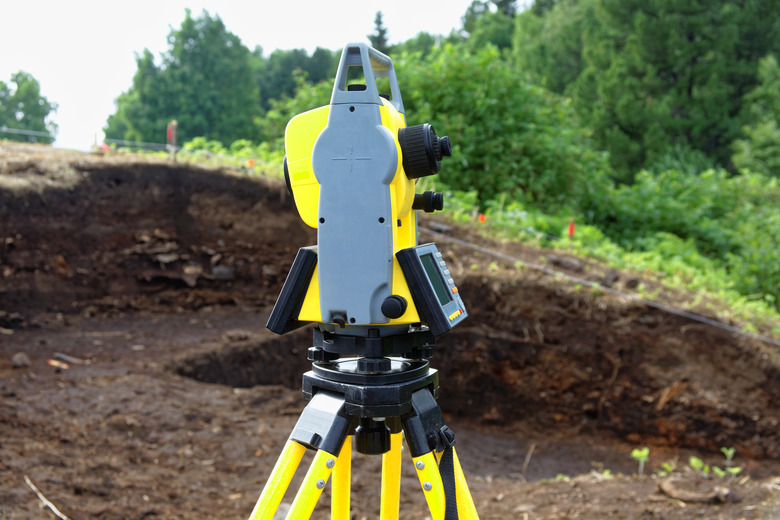How To Use A Total Station
A total station is an instrument used in surveying and archaeology that yields exact measurements of distance and location. While a total station is a complex instrument, the basics of setting it up and using it are straightforward.
Step 1
Set up the station. Extend the tripod legs, and position the top of the tripod so that it is exactly over the mark from where you wish to work. Adjust the tripod so that the top is more or less level. Push the legs slightly into the ground to stabilize the station.
Step 2
Mount the instrument onto the tripod. Use the plumb-bob to center the instrument over the mark. Make adjustments to the station and tripod position to get it over the mark.
Step 3
Adjust the base of the tripod by lengthening or shortening each tripod leg, until the circular level is even.
Step 4
Use the bubble level on the plate to level the station by adjusting two leveling screws until the level is between the two lines. Then turn the station a quarter of a turn, and use the third screw to make the final fine adjustment.
Step 5
Turn the station several times to make sure it stays level and centered in any direction.
Cite This Article
MLA
Ketchum, Daniel. "How To Use A Total Station" sciencing.com, https://www.sciencing.com/use-total-station-5011000/. 9 May 2009.
APA
Ketchum, Daniel. (2009, May 9). How To Use A Total Station. sciencing.com. Retrieved from https://www.sciencing.com/use-total-station-5011000/
Chicago
Ketchum, Daniel. How To Use A Total Station last modified March 24, 2022. https://www.sciencing.com/use-total-station-5011000/
